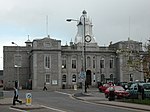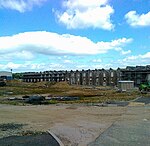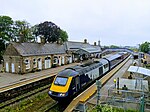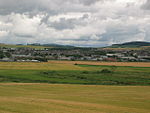The Aberdeenshire Canal was a waterway in Aberdeenshire, Scotland, designed by John Rennie, which ran from the port of Aberdeen to Port Elphinstone, Inverurie. It was originally planned to reach Monymusk, but had been truncated by the time an Act of Parliament was obtained in 1796. Construction was hampered by a lack of finance, and some local opposition, but it opened in 1805. Some of the workmanship was sub-standard, and several of the locks failed soon afterwards, but they were reconstructed, and reopened in late 1806.
It was used for the carriage of a wide variety of cargo, and passenger services were also introduced. These proved popular, and two boats a day made the journey during the summer months, with one in the winter. They gradually faced competition from the adjacent turnpike road, which was quicker but more expensive. A connecting lock was built in 1834, to enable boats to enter Aberdeen harbour, which eased the problem of transhipping goods to larger vessels. The canal normally closed between December and March each year, due to icing.
It was never a financial success, and the shareholders did not receive any dividends during its life. Negotiations began in 1845 with the Great North of Scotland Railway, who eventually bought it. Contractors working for the railway company drained much of the canal before any money had changed hands, and the breach had to be repaired. The canal was finally closed in early 1854, so that the railway could lay tracks along its course. The line from Kittybrewster to Huntly was completed by September 1854.
As the railway runs straighter than the canal, in some places, clear evidence can be seen for the canal. A scenic walk has been created at Port Elphinstone, part of which follows a channel labelled Old Canal on Ordnance Survey maps, this part thought to be a later lade that served a mill.









